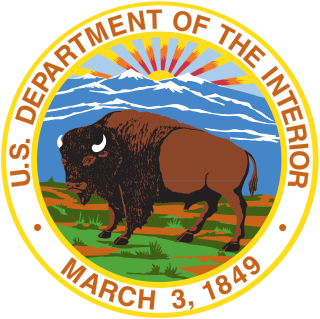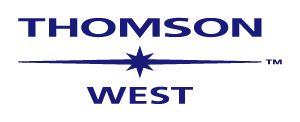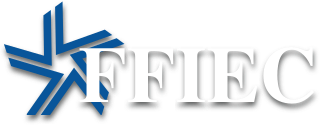The National Institute of Standards and Technology (NIST) is a physical sciences laboratory and non-regulatory agency of the United States Department of Commerce. Its mission is to promote American innovation and industrial competitiveness. NIST's activities are organized into laboratory programs that include nanoscale science and technology, engineering, information technology, neutron research, material measurement, and physical measurement. From 1901 to 1988, the agency was named the National Bureau of Standards.

The United States Department of the Interior (DOI) is one of the executive departments of the U.S. federal government. It is responsible for the management and conservation of most federal lands and natural resources, and the administration of programs relating to Native Americans, Alaska Natives, Native Hawaiians, territorial affairs, and insular areas of the United States, as well as programs related to historic preservation. About 75% of federal public land is managed by the department, with most of the remainder managed by the United States Department of Agriculture's United States Forest Service. The department was created on March 3, 1849.
Market value or OMV is the price at which an asset would trade in a competitive auction setting. Market value is often used interchangeably with open market value, fair value or fair market value, although these terms have distinct definitions in different standards, and differ in some circumstances.
Real estate appraisal, property valuation or land valuation is the process of developing an opinion of value for real property. Real estate transactions often require appraisals because they occur infrequently and every property is unique, unlike corporate stocks, which are traded daily and are identical. The location also plays a key role in valuation. However, since property cannot change location, it is often the upgrades or improvements to the home that can change its value. Appraisal reports form the basis for mortgage loans, settling estates and divorces, taxation, and so on. Sometimes an appraisal report is used to establish a sale price for a property.
Capability Maturity Model Integration (CMMI) is a process level improvement training and appraisal program. Administered by the CMMI Institute, a subsidiary of ISACA, it was developed at Carnegie Mellon University (CMU). It is required by many U.S. Government contracts, especially in software development. CMU claims CMMI can be used to guide process improvement across a project, division, or an entire organization. CMMI defines the following maturity levels for processes: Initial, Managed, Defined, Quantitatively Managed, and Optimizing. Version 2.0 was published in 2018. CMMI is registered in the U.S. Patent and Trademark Office by CMU.

The Manual on Uniform Traffic Control Devices for Streets and Highways is a document issued by the Federal Highway Administration (FHWA) of the United States Department of Transportation (USDOT) to specify the standards by which traffic signs, road surface markings, and signals are designed, installed, and used. In the United States, all traffic control devices must legally conform to these standards. The manual is used by state and local agencies as well as private construction firms to ensure that the traffic control devices they use conform to the national standard. While some state agencies have developed their own sets of standards, including their own MUTCDs, these must substantially conform to the federal MUTCD.

The Defense Contract Management Agency (DCMA) is an agency of the United States federal government reporting to the Under Secretary of Defense for Acquisition and Sustainment. It is responsible for administering contracts for the Department of Defense (DoD) and other authorized federal agencies. Its headquarters is located at Fort Lee, Virginia. DCMA sometimes handles Foreign Military Sales contracts.
A United States defense standard, often called a military standard, "MIL-STD", "MIL-SPEC", or (informally) "MilSpecs", is used to help achieve standardization objectives by the U.S. Department of Defense.

The Konrad Adenauer Foundation is a German political party foundation associated with but independent of the centre-right Christian Democratic Union (CDU). The foundation's headquarters are located in Sankt Augustin near Bonn, as well as in Berlin. Globally, the KAS has 78 offices and runs programs in over 100 countries. Its current chairman is the former President of the German parliament Deutscher Bundestag, Norbert Lammert. It is a member of the Centre for European Studies, the official foundation and think tank of the European People's Party (EPP).
Highest and Best Use, or highest or best use (HBU), is a concept that originated with early economists such as Irving Fisher (1867-1947), who conceptualized the idea of maximum productivity. One of the earliest citations of the term is found in the Minutes of the Maine Legislature as early as 1831 in speaking about the assessment and valuation of real estate: "...the land was classified preceding such change of use, had such real estate been assessed at its highest and best use..." It is the concept in real estate appraisal that shows how the highest value for a property is arrived at. In any case where the market value of real property is sought, that value must be based on its highest and best use. Highest and best use is always that use that would produce the highest value for a property, regardless of its actual current use.

West is a business owned by Thomson Reuters that publishes legal, business, and regulatory information in print, and on electronic services such as Westlaw. Since the late 19th century, West has been one of the most prominent publishers of legal materials in the United States. Its headquarters is in Eagan, Minnesota; it also had an office in Rochester, New York, until it closed in 2019, and it had an office in Cleveland, Ohio, until it closed in 2010. Organizationally, West is part of the global legal division of Thomson Reuters.

The Federal Financial Institutions Examination Council (FFIEC) is a formal U.S. government interagency body composed of five banking regulators that is "empowered to prescribe uniform principles, standards, and report forms to promote uniformity in the supervision of financial institutions". It also oversees real estate appraisal in the United States. Its regulations are contained in title 12 of the Code of Federal Regulations.

The Financial Institutions Reform, Recovery, and Enforcement Act of 1989 (FIRREA), is a United States federal law enacted in the wake of the savings and loan crisis of the 1980s.
The Appraisal Foundation (TAF) is the United States organization responsible for setting standards for the real estate valuation profession. The organization sets the congressionally-authorized standards and qualifications for real estate appraisers, and provides voluntary guidance on recognized valuation methods and techniques for all valuation professionals. The aim is to ensure appraisals are impartial, objective and independent, are conducted without bias and are performed in an ethical and competent manner.
Uniform Standards of Professional Appraisal Practice (USPAP) can be considered the quality control standards applicable for real property, personal property, intangible assets, and business valuation appraisal analysis and reports in the United States and its territories. USPAP, as it is commonly known, was first developed in the 1980s by a joint committee representing the major U.S. and Canadian appraisal organizations. As a result of the savings and loan crisis, the Appraisal Foundation (TAF) was formed by these same groups, along with support and input from major industry and educational groups, and TAF took over administration of USPAP.
A trophy property or trophy home is a real estate term for the top 2% of properties in a given subcategory, the term refers to residences, architecturally or historically preserved properties, agricultural lands that have extraordinary yields, high-amenity natural land and properties with spectacular views, or other extraordinary amenities. The term also can refer to capstone properties such as office buildings or other unique income-producing properties.
The Appraisal Standards Board (ASB) develops, interprets and amends the Uniform Standards of Professional Appraisal Practice (USPAP). The ASB is composed of seven appraisers who are appointed by the Board of Trustees of The Appraisal Foundation. Activities of the Board are directed by the Chair, who is appointed by the Board of Trustees for a one year term. The ASB exercises all authority over the subject, style, and content of USPAP and its other communications. It also performs all functions of The Appraisal Foundation with respect to establishing, improving, fixing and promulgating uniform standards of professional appraisal practice.
In the field of real estate appraisal, extraordinary assumptions and hypothetical conditions are two closely related types of assumptions which are made as predicating conditions of an appraisal problem. Under the Uniform Standards of Professional Appraisal Practice (USPAP), they are two of the assignment conditions on which an appraisal assignment is predicated, the others being general assumptions, laws & regulations, supplemental standards, jurisdictional exceptions, and other conditions affecting scope of work. Making the distinction between the two is important when compiling or reporting appraisals in the United States or other jurisdictions where USPAP is considered the professional standard because USPAP has different specific disclosure requirements for each in an appraisal report and specifies different conditions under which each can be made.

The International Right of Way Association (IRWA) is considered the central authority for right of way education and certification programs, as well as professional services, worldwide.







